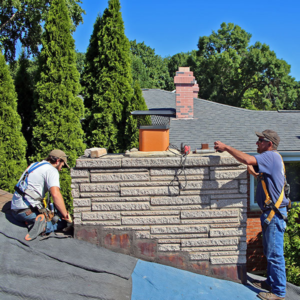Bakersfield Exterminator is a professional who removes pests from homes and businesses. They may use chemicals, traps, or other methods to control pests.
Some exterminators depend heavily on pesticides, but these products often offer only a temporary solution and do not get to the root of the problem. Other pest control professionals focus on Integrated Pest Management to uncover what attracts certain pests and alter conditions that encourage them.

If you see something crawling in your house or on your plants, a swarm of wasps flying around your yard, or bite marks on your skin that could be from an allergic reaction or a biting insect, you should try to identify the pest and find out what it is before calling an exterminator. Correct identification can help you decide whether the pest should be tolerated or controlled and what management strategies might be effective. It also enables you to plan and execute monitoring efforts to determine how often and where the pests are present, what damage they’re doing, and when control might be needed.
Depending on the type of pest, you can use many methods to identify it. Some pests are easily distinguished by their color, shape, or number of legs. For example, ants and bed bugs have distinctive colors, and some insects have stripes or other markings. Others have identifying features such as antennae, body segments, or wings. Insects, arachnids, and other pests have six to hundreds of legs.
Some pest species look different at various stages of their life cycle or in different habitats. For example, a weed seedling might be difficult to recognize in its mature form. Insects that undergo metamorphosis—from eggs to larvae to pupae or adults—also differ in appearance.
Sometimes, you might need to collect the pest and compare it with a picture or description in an identification guide to get a more accurate diagnosis. These guides can be found online or at your local university entomology department.
In many cases, the best way to identify a pest is to examine it under a microscope or in a magnifying glass. Detailed information about the pest, such as its habits, habitat, and food preferences, is usually available in the identification guides. The guide will describe how to collect the pest, how to prepare it for examination, and other relevant information. You can also ask your county extension office or a pest management professional to help you identify pests.
Treatment
An exterminator’s job involves the elimination of unwanted pests, whether they’re insects or rodents. They’ll use a variety of methods to treat infestations, including baits, traps and sprays. They also may use environmental control techniques to keep pests out of buildings or homes. For example, they might seal cracks and crevices or place barriers around a house’s foundation.
Depending on the type of treatment, an exterminator might ask a home’s occupants to leave temporarily. This is a safety precaution to avoid direct contact with any chemicals being used during the application process. For instance, some sprays can make people ill if exposed directly to them during the application process.
When exterminators spray for pests, they’ll need to maneuver in tight spaces and climb stairs. This is because many treatments are conducted in residential settings, such as single-family homes or apartments. They also might be called to work in crawl spaces, basements or attics – which can be damp, dark and cramped.
Before the advent of DDT, ads in newspapers and telephone books depicted pests getting hit with hammers or bombed to death. Those days are long gone, though, as more and more people have learned the value of controlling pests through non-toxic methods.
A good exterminator will be able to help you prevent future problems with pests. For example, you can clean your drains frequently to keep them clear of standing water and regularly sweep your yard to remove any weeds that might serve as a hiding place for cockroaches or fleas. You can also store food and trash tightly in containers to reduce the chances of pests gaining access to them.
Some people also find that removing clutter from their homes and keeping them clean can deter pests from returning. You should also dispose of any food that you’ve eaten in a plastic garbage bag instead of throwing it away. Then, if you notice any new pests, you can contact your exterminator right away for additional assistance. Usually, they’ll be able to handle the problem quickly and effectively. If not, they’ll recommend another course of action.
Prevention
An exterminator can help protect homes and businesses from damage caused by pests. In addition to reducing the number of pests in an area, exterminators can also advise customers on how to prevent pest infestation in the future by sealing entry points and establishing barriers.
In order to properly carry out these tasks, an exterminator must have a thorough understanding of the various types of pests that can invade a home or business. Depending on the pest, an exterminator may recommend different treatments. For example, a roach infestation might be treated with a combination of chemicals and baits, while a flea problem might require an insecticide.
The first step in an exterminator’s process is a full inspection of the affected areas. During the inspection, the exterminator must identify the type of pest, the severity of the infestation and the extent of any related damage. This will allow the exterminator to develop a targeted treatment plan that is appropriate for the situation.
When applying sprays, exterminators take numerous safety measures to ensure that the product is applied correctly and does not cause any unnecessary exposure or harm. This may include removing pets, covering or removing food items from the kitchen and surrounding areas and ventilating the space. Once the application is complete, an exterminator will provide guidelines for when it is safe to return to the affected areas.
Pests such as rodents and cockroaches can cause extensive damage to homes and businesses, and they can even spread dangerous germs. Mosquitoes, for example, can cause encephalitis and other deadly diseases, while fleas can spread typhus and the plague. Roaches, in particular, are highly resistant to pesticides, making them difficult to eliminate without using a combination of treatments.
The most common way that an exterminator controls pests is through the use of chemicals. In most cases, this involves liquid sprays or powders that are designed to kill or repel specific pests. The sprays or powders are usually applied to the inside of walls, in attics, under sinks and other areas where pests hide. In some cases, traps or other devices are used to capture pests, such as rat traps and mice traps.
Follow-Up
The follow-up is a crucial component of many professional interactions. It is a way to show your customer that you are invested in their needs and want to build a strong relationship. When used effectively, the follow-up can lead to new business, increased revenue, and stronger partnerships.
When it comes to pest control, following up is essential to ensure that your treatment is effective and prevents re-infestation. A good exterminator will provide a thorough inspection of your home, looking for places that pests like to hide or enter, as well as checking for damage caused by infestations. Then, they will use a combination of treatments to get rid of the problem and prevent it from returning.
Depending on the type of pest, the length of your treatment can vary. Spraying for bugs is usually quicker than setting traps or bait, but a more stubborn infestation might require multiple, longer visits to eradicate the pests completely. Your exterminator will explain the process to you during the initial visit and give you an idea of how long it should take.
After your treatment, it’s a good idea to stay away from the treated areas for a few hours until the chemicals have had a chance to dry. This helps to keep you safe and prevents accidentally touching any wet spots. Keeping windows open and fans running can also help speed up the drying time.
It’s also a good idea to move furniture away from walls, pick up clutter, and clean the surfaces in your home to make it easier for the exterminator to access hard-to-reach places. This can also help prevent the spread of pests during and after your treatment.
If you’re battling a roach infestation, you can count on Ledford Pest Control to be there for you with professional expertise, a deep commitment to customer service, and unwavering dedication to protecting your health and safety. Reach out to us online today to learn more about our roach extermination services and how we can help you reclaim your home from cockroaches!






